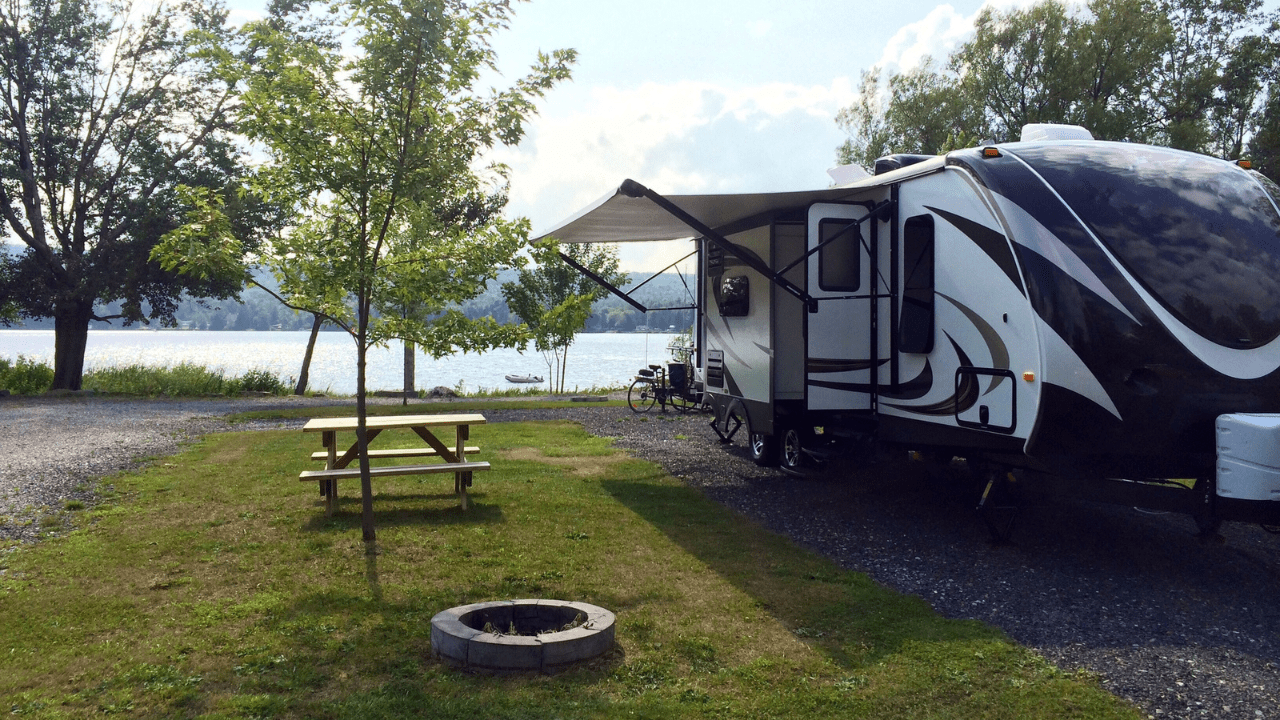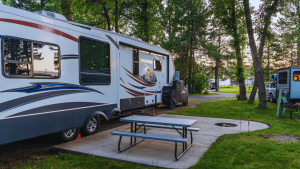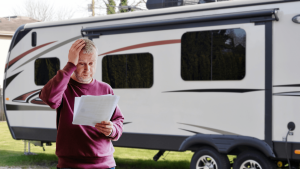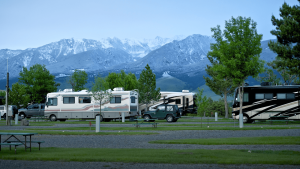Plenty of RVers (new and seasoned) end up creating headaches for themselves during the setup process. I’ve made my share of mistakes over the years, and have read stories from other RVers in our community and other groups about their setup flubs.
On that note, I created a quick, rapid-fire list – you can read them in under three minutes – of some of the most common slip-ups that could potentially save you hours of aggravation later.
1. Forgetting to Check Slide Clearance
Slides don’t care if there’s a tree, picnic table, or power pedestal in the way. They extend anyway. Know how far yours reach and look around before you unhook. Saves a lot of frustration.
2. Plugging In After You’ve Already Leveled
A lot of RVers will go through the whole routine – level, unhitch, stabilizers down – before ever testing the power pedestal. Then they find out the outlet is dead, miswired, or the breaker keeps tripping. At that point, moving sites is a giant hassle.
Do yourself a favor: plug in before you commit. Check for power, make sure the breakers work, and confirm that your cord reaches. Once you know the power is good, then start leveling and unhooking, which brings us to…
3. Skipping Leveling Before Setup
If the rig isn’t level, you’ll feel it one way or another. Some fridges won’t run properly, doors may swing shut, and your frame carries stress it doesn’t need. Get it level first, then proceed with the rest of the setup.
4. Ignoring Wheel Chocks
That trailer may look parked, but without chocks it can shift on even a mild slope. A couple of sturdy blocks under the wheels keep it where you want it.
5. Plugging In Without a Surge Protector
Campground wiring isn’t always clean. Miswired pedestals and voltage spikes can fry appliances fast. A surge protector takes the hit instead of your air conditioner or fridge.
6. Overlooking Water Pressure Regulation
Campground water pressure is all over the place. Some spots are fine, others blast so hard they can blow fittings inside your rig. RV plumbing isn’t built like a house. Toss a regulator on the spigot and you won’t wake up to a soaked floor.
7. Not Filtering Campground Water
Plenty of campgrounds have water that’s cloudy, heavy with minerals, or just plain funky. You don’t want that sitting in your tank, running through your heater, or onto your toothbrush. A simple inline filter keeps the majority of that out. Even if you don’t drink it straight from the tap, everything in your RV lasts longer.
8. Mixing Hoses Between Fresh Water and Sewer
One hose for fresh water, a different one for flushing the black tank. That’s it. If you use the same line for both, you’re basically asking for cross-contamination. Keep them separate, and make the sewer one a bright color so you never mix them up by accident.
9. Underestimating Sewer Hose Length
Not every hookup is conveniently at the back corner of your site. If you’ve only got a short hose, you could be out of luck. I have a 20-foot Camco hose that comes in two 10-foot sections. I’ve never had an issue, but I have come close to maxing out the 20-foot length before.
10. Misusing Stabilizer Legs
Stabilizers aren’t jacks. They’re not there to lift your trailer, just to take the wobble out. Crank them too far and you’ll bend them or stress the frame. Let them touch down snug and stop there.
11. Leaving Sewer Valves Open
Leaving the black tank valve open might seem logical, but it’s a guaranteed clog maker. Liquids drain out, solids stay behind, and you get what people call the “pyramid of poo.” Keep them shut until the tank is ready to dump, then empty it all at once.
12. Skipping the Final Walk-Around
You think you’re ready to go, but a two-minute walk around the rig can save you from expensive mistakes. People have driven off with steps still down, antennas up, or hoses dragging. A quick lap touching each connection and latch is worth the time.
13. Not Using a Setup Checklist
Even seasoned RVers forget things now and then. You get distracted, or you’re in a hurry, and suddenly you’re rolling down the highway with the antenna still up. A simple checklist takes the guesswork out of both arrival and departure. It’s not about being a rookie; it’s about not leaving anything behind.
Want a ready-made option? I put together RV Arrival & Departure Checklists that cover everything from choosing a site to securing loose items before you hit the road. They even come with blank copies you can customize for your own rig. Download them instantly and make setup and tear-down way less stressful.







This seems like a helpful site for both receiving and giving for your experiences while Raving. We have been Raving for over 30 yrs and it’s always good to hear other people’s experiences. We have plenty of our own.